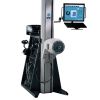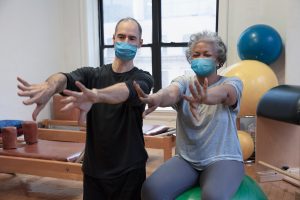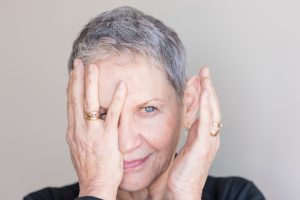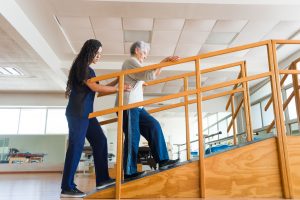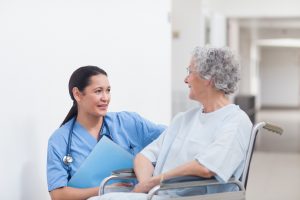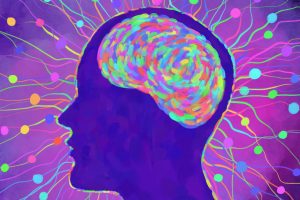
Magnetic Brain Stimulation May Improve Stroke Patients’ Health
Treatment GuidelinesResearchers recently found that a type of magnetic brain stimulation, rTMS, can improve outcomes for stroke patients. This research has the potential to revolutionize the treatment for stroke patients, supplementing traditional therapeutic methods.
Therapy professionals always strive to deliver the best care to their patients. In today’s fast-paced world, that means keeping up with the latest advances in the field. For example, researchers recently found that a type of magnetic brain stimulation, rTMS, can improve outcomes for stroke patients. This research has the potential to revolutionize the treatment for stroke patients, supplementing traditional therapeutic methods.
What is rTMS?
rTMS stands for Repetitive Transcranial Magnetic Stimulation. It is a non-invasive technique that stimulates the brain. During the process, the technician places magnetic coils on the patient’s scalp. From there, short electromagnetic pulses travel through the coils to targeted portions of the brain.
Patients say they can barely feel the pulses, but it has been compared to tapping. When pulses reach the brain, they stimulate neurons by triggering electric currents.
These electric currents are created by rapidly changing magnetic fields. This changing begins with a short high-intensity electric current passing through the wire coil. This produces a magnetic field that gets projected perpendicularly with the electric current.
The repetitive pulses of rTMS make it a better stroke treatment method than standard TMS. Standard TMS delivers single and double pulses. Delivering repetitive pulses modulates cerebral cortex excitability for a longer period of time.
rTMS for other diagnoses
In addition to stroke treatment, rTMS has other applications. It can regulate activity within specific areas of the brain and enhance certain cognitive processes. Other research has also connected rTMS to improved neuroplasticity with motor training.
In the past, rTMS has been used as a treatment for mood disorders, such as depression, anxiety, and psychosis. A fairly recent study found that one-third of people dealing with a specific schizophrenia marker saw a reduction in symptoms thanks to rTMS.
The researchers and their goals
The team behind the recent report was co-led by Shasha Li, from Harvard Medical School and Massachusetts General Hospital, and Dr. Chengqi He, from Sichuan University. These experts are based in Boston, Massachusetts and the People’s Republic of China, respectively.
Dr. He and Dr. Li aimed to review the previous studies related to rTMS and its potential impact on stroke patients. One example of a study they reviewed would be the one conducted by the Wexner Medical Center at The Ohio State University. In this previous study, rTMS improved arm movement in stroke patients.
In total, the team analyzed at least nine studies using rTMS for stroke patients. This included five randomized and controlled trials. The participants in the original studies had either hemorrhagic or ischemic strokes.
The researchers hoped to determine whether rTMS could improve motor skills for stroke patients. Specifically, they looked at the impact of rTMS on balance, speed, and more during post-stroke rehabilitation.
Following the review, they published their results in the journal for the Association of Academic Physiatrists, the American Journal of Physical Medicine & Rehabilitation.
The correlation between rTMS and walking speed
One of the most important findings of this study was that rTMS improves walking speed significantly. Because six of the nine reviewed studies included walking speed data, this was a natural point of focus for the researchers. Based on the pooled analysis of these studies, there was data on 139 stroke survivors.
The result showed significant improvement in walking speed with rTMS. But the researchers discovered more detail than this. Those who received rTMS treatment on the opposite side of their brains of where the stroke occurred did not experience improvement. By contrast, the improvement was significantly greater among those who experienced the rTMS stimulation on the stroke side of their brain.
Other relevant findings
Additionally, Dr. He and his team examined whether rTMS affected other key patient outcomes for stroke patients. There was no noticeable improvement for motor function, brain responsiveness, or balance.
Other studies and uses of rTMS for stroke patients
In the past, some researchers have hypothesized as to why rTMS delivers positive patient outcomes for stroke patients. Some experimental studies indicate that strokes would lead to hyperactivity of the hemisphere that was not affected.
This would be due to the lack of reciprocal inhibition with the interactions being referred to as interhemispheric inhibitory interactions. In this case, the low-frequency rTMS would serve as an inhibitory stimulation on the unaffected hemisphere of the brain.
Other researchers suggest that using high-frequency rTMS to excite the stroke hemisphere would enhance the corticospinal output. In this case, that corticospinal output would deliver the improved results, when combined with occupational therapy and other treatments.
rTMS in the clinic
There are plenty of opportunities to apply these findings in a therapy clinic. Estimates indicate that each year, 800,000 people have a stroke within the United States. As such, it is among the leaders in long-term disability causes. Over half of stroke survivors have to deal with reduced mobility.
The important thing to keep in mind is that the rTMS treatment should not be used alone to treat stroke patients and it has still not been proven. At this point, patients can receive this treatment at a rehab clinic in combination with other physical therapy methods. In that way, stroke patients may see an improvement.
Without more research on rTMS for stroke patients’ mobility, most therapy clinics offer rTMS only for mood disorders like depression. Offering rTMS for stroke patients would require a different protocol. Additional care is also necessary at this time until more research is completed.
The best solution at the moment is to continue to monitor upcoming research regarding rTMS and other methods for treating stroke-related mobility impairments. If the demand for research grows, the research should happen. Growth in research can provide the desired improved patient outcomes and give rehabilitation clinics the scientific backing they need to offer this type of treatment. In the meantime, therapy clinics must rely on other methods, like physical therapy.
Future rTMS research
Although research shows that rTMS is very promising for treating stroke patients, further research is still needed. In fact, the study’s authors even point this out in the conclusion of the study. The researchers suggested additional studies in the future that have a larger sample size as well as a long enough follow-up period.
There is at least one study planned that hopes to explore the impact of rTMS on treating post-stroke depression. Those studies essentially combine newer research on the positive impact of rTMS on stroke patients with the conditions rTMS was previously used to treat, such as depression. Time will tell what future studies find, with some likely looking specifically at mobility and rTMS.
Sara M., DPT
References
- Sandoiu, A. 2018. Stroke surviors may benefit from magnetic brain stimulation. Medical News Today. https://www.medicalnewstoday.com/articles/321772.php
- Li, Y., et al. 2018. Effects of repetitive transcranial magnetic stimulation on walking and balance function after stroke: a systematic review and meta-analysis. American Journal of Physical Medicine & Rehabilitation. https://journals.lww.com/ajpmr/Citation/2018/11000/Effects_of_Repetitive_Transcranial_Magnetic.1.aspx
- Kaga, A., et al. 2012. Repetitive transcranial magnetic stimulation (rTMS). Heart & Stroke Foundation. https://www.strokengine.ca/en/intervention/repetitive-transcranial-magnetic-stimulation-rtms/
- Schmidt, S. 2018. rTMS as an add-on therapy in patients with post-stroke depression. US NIH National Library of Medicine. https://clinicaltrials.gov/ct2/show/NCT03761303

